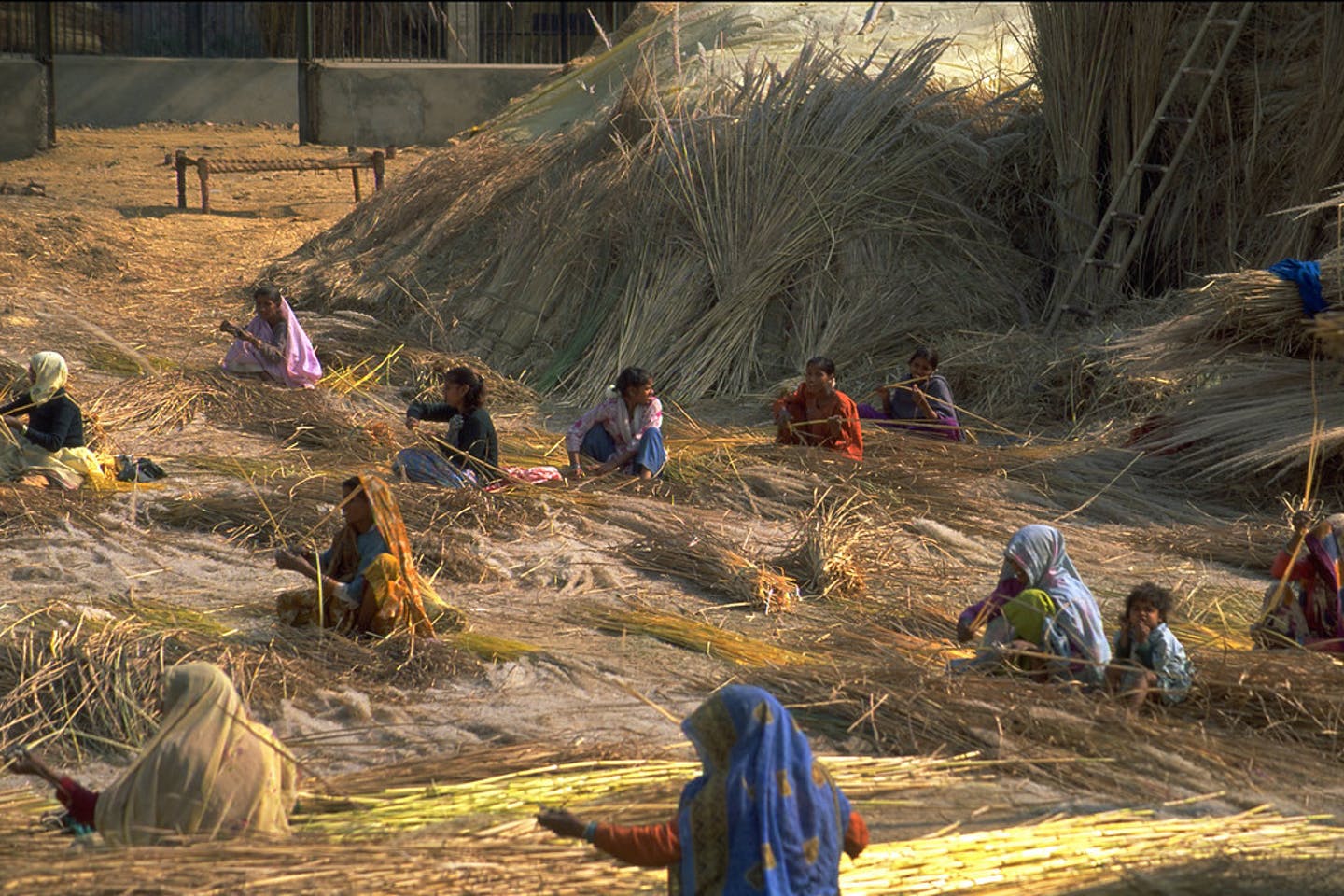Last month, India’s Prime Minister, Narendra Modi, issued the first 0.1 million Rural Property Cards (RPCs) to communities across more than 763 villages in six states in rural India under the SVAMITVA scheme. The ambitious scheme, a collaborative project involving federal, state and local governing institutions, aims to map unsurveyed rural land parcels under habitation to provide RPCs to 0.66 million villages by 2024. This undertaking aims to finally address the longstanding land information challenges perceived to underscore the yawning gap between India, and Bharat – the vernacular name for the large, poor, excluded, rural and economically underdeveloped part of the country.
A model of land administration innovation
SVAMITVA was quietly launched in April 2020 but will undoubtedly be closely watched by many countries in the Global South, particularly ex-British colonies that experience similar land administration legacy and exclusions. India’s vast physical scale, sheer population numbers, dominant agrarian sector, complex land governance and tenure arrangements and entrenched class and gender relations, typifies the technical, institutional and capacity challenges confronting countries seeking to formalise land and property rights as part of land administration reform for development. Such reform is sorely needed as foreign investors increasingly displace rural, Indigenous and forest communities in large-scale land acquisitions in the Global South. With experts estimating that as much as 75% of the world holding extra-legal rights to land and property, there is a push to innovate current models of land administration – reliant on expensive, traditional survey methods – to improve tenure security. India’s approach combining the use of drone technologies, participatory mapping and village level panchayats dispenses with donor assistance and instead proves how quickly property information can be documented, digitised and disseminated with a decentralised, democratic model.
A helping (invisible) hand for pro-poor land administration?
With SVAMITVA, India represents the latest in a global push for land formalisation promulgating a pro-poor rhetoric. In a recent speech, PM Modi joined a retinue of world leaders (including Kofi Annan, Bill Clinton, Margaret Thatcher and Hosni Mubarek) who subscribe to the ideology of Peruvian economist, Hernando De Soto, the central tenet being that, formalising existing rights and integrating them with legal registers, would enable the poor to transform their once “dead assets” into capital, providing the ability to participate in land markets. Indeed, capitalisation of land and property assets is poor in India: households hold 77% share of their wealth in land and property, more than China (62%) and US (44%), but mortgage-to-GDP ratio was only 10% in 2017, compared with 18% in China and 56% in the US.
Yet research shows the causality in this argument is flawed. De Soto’s ideology is embedded in many donor projects but evidence shows that land-related structural adjustment and titling programs do not always deliver intended outcomes. Formal property institutions also operate on the principle of exclusion, with high transaction costs and negative externalities often borne by the poor and the vulnerable, as is India’s experience. Individuals’ ability to participate in, and benefit from property institutions is not just a matter of capitalism, but a consequence of how they are situated within social and political contexts. Poverty and weak land markets are not a failure of capitalism but a failure of both markets and states.
The public value creation potential of SVAMITVA
SVAMITVA – a Sanskrit word meaning ‘ownership’ or ‘proprietary rights’ derived from ‘Swami’ used to denote ‘hindu male teacher’ or ‘master’ or ‘husband’- symbolises power and patriarchy. It has come at an important time as India witnesses a mass reverse migration from urban to rural areas because of COVID19, a recognition of the social and physical capital in rural communities and assets that mitigate economic shocks. It also marks an important departure in how land administration is delivered in India, public services long compromised by legacy systems and chronic information issues.
At this early stage, we argue a public value perspective would be useful in directing public managers’ attention towards a more holistic consideration of land administration service delivery for Bharat. Public value has emerged in recent times as a concept that expands on the dominant economic paradigm of value in public service delivery, invoking broader thinking about what constitutes value to society.
To date, a focus on neoliberal values of efficiency dominates how SVAMITVA is framed. A focus on data collection and a celebration of how quickly the first 0.1 million RPCs have been achieved distracts from longer term issues: the utilitarian value of the data is only partially realised since first registration records are only useful if they can be kept current. A focus on implementation efficiency is used to infer service quality improvement, but this one-dimensional metric could arguably institutionalise perverse incentives that subvert inclusive participation that often requires more time. Past experiences underscore the vulnerability of survey and settlement processes to being subverted by power, caste and gender relations, as well as political biases and corruption both at local and state levels. Thus, arguments for decentralised processes rightly emphasise democracy and inclusion but in practice, lack clear structures of coordination, accountability and oversight. Finally, although SVAMITVA is mainly framed in terms of conveying economic value to Bharat’s constituents, a noticeable absence of clear policies that link RPCs – which are not land titles – to financial and judicial institutions, raises questions over how propositions of economic emancipation could be fulfilled; if anything, the issuance of RPCs guarantees an increased tax burden on rural households.
The public value proposition of SVAMITVA could be a more inclusive land administration system for Bharat that delivers high quality land recording services and achieves socially desirable outcomes in terms of inclusion of women and dalit communities. This would build and reinforce trust between governments and the poorest and most marginalised groups. With tenure informality an embedded reality in Indian contexts, thanks to historical legacies and land administration inadequacies, SVAMITVA seems a well-intentioned innovation with a high potential for improving land administration and moderate potential to expand land markets. What seems more than likely is its limited potential to ensure inclusion and benefits to the rural poor. Embedding a proactive inclusion lens in its implementation and monitoring framework is critical given past Indian and global experiences.
Can SVAMITVA bridge the divide that marginalises Bharat through exclusions perpetuated by colonialism, patriarchy, caste and class? It remains to be seen but the theory of change appears to be predicated on well-functioning supporting public institutions and a commitment to transparent, democratic dialogue between public land administration actors and Bharat.
Biography
Serene Ho is a Vice-Chancellor’s Research Fellow at RMIT University, Australia. Her interdisciplinary research explores issues of social innovation in land administration, especially around how new geospatial technologies used to map land rights impact trust relationships between communities and governments.
Pranab Choudhury has founded and coordinates NRMC Center for Land Governance (CLG) that espouses criticality of Land Tenure Security for Inclusive Growth and Sustainable Development. CLG, contributes to expand India’s Land Governance space with actors, evidences and innovations, through policy and action research, piloting and scaling up solutions, capacity building and by triggering partnerships. First as a Scientist, researching landscape restoration in India’s tribal regions, and later as a consultant engaging on inter-disciplinary issues around agriculture, forestry and rural livelihoods, across South Asian geographies, Pranab is exposed to diverse land use and tenure dynamics and how they influence development.



